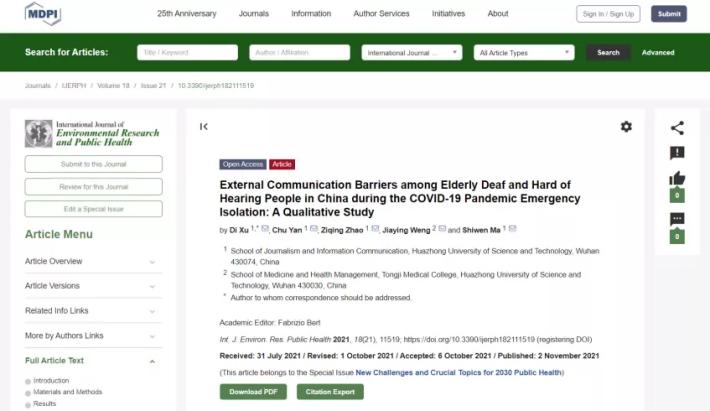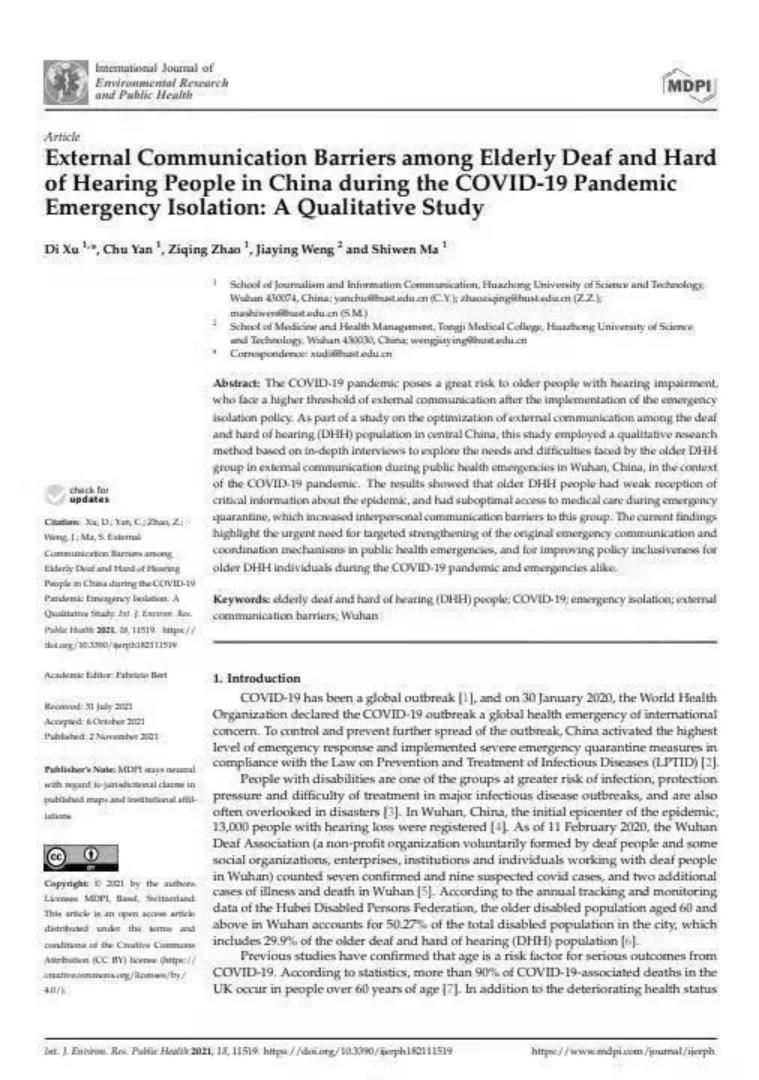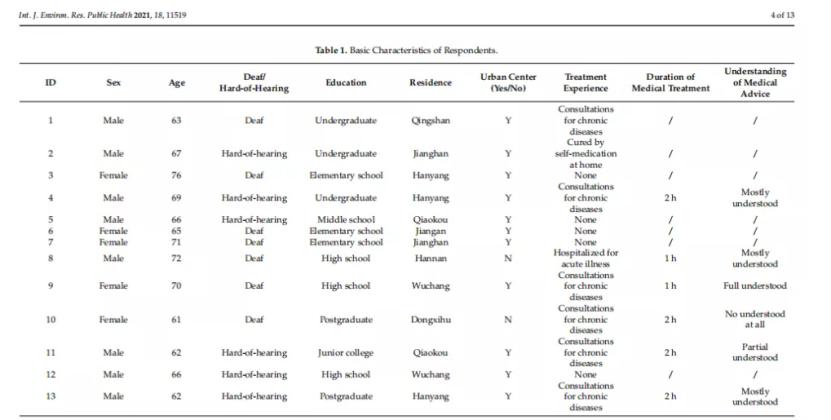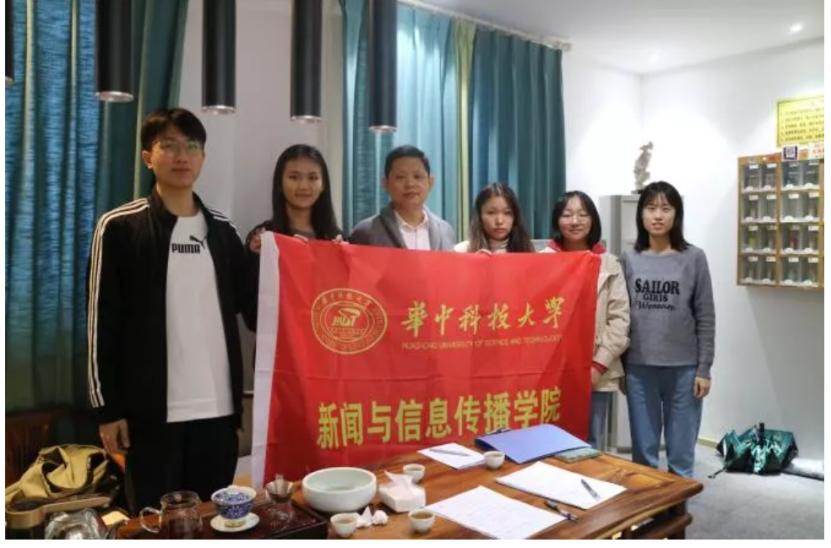On November 2, 2021, the internationally renowned SSCI & SCI journal,International Journal of Environmental Research and Public Health, published the “External Communication Barriers among Elderly Deaf and Hard of Hearing People in China during the COVID-19 Pandemic Emergency Isolation: A Qualitative Study”, a publication instructed by young lecturer Di Xu, also the latest research result of the College Students’ Innovation and Entrepreneurship Competition project team in the field of health communication. (Xu, D.; Yan, C.; Zhao, Z.; Weng, J.; Ma, S. External Communication Barriers among Elderly Deaf and Hard of Hearing People in China during the COVID-19 Pandemic Emergency Isolation: A Qualitative Study. Int. J. Environ. Res. Public Health 2021, 18, 11519.) The journal has been listed in SSCI Q1 and SCI Q2 in public health, environmental hygiene and occupational health by JCR for 3 consecutive years, with an impact factor of 3.390. The first author is Di Xu, a young lecturer at the School of Journalism and Information Communication (SJIC), Huazhong University of Science and Technology (HUST). Other participating authors include SJIC junior undergraduates Chu Yan, Ziqing Zhao, Shiwen Ma, and junior undergraduate Jiaying Weng, from the School of Medicine and Health Management, Tongji Medical College, HUST. This is the first time that SJIC undergraduates have published their research in the SSCI (Q1) & SCI (Q2) journal.

According to statistics, the total number of disabled people in China has reached 85 million, of which about 27.8 million are hearing-impaired, accounting for more than 30% of the total. In Wuhan alone, there are 13,000 hearing-impaired people registered. In emergencies, hearing-impaired people become a special vulnerable group during the epidemic due to their special communication method and their lag in obtaining information.
The paper adopts a qualitative research method based on in-depth interviews, analyzes the external communication needs of the deaf and hard of hearing people in emergency situations, and explores the information communication barriers, interpersonal communication barriers and doctor-patient communication barriers of this group in public health emergencies. Based on a comprehensive understanding of the real communication situation of the deaf and hard of hearing people, the paper further analyzes this group’s basic interpersonal communication needs and media information acquisition channels in special periods, and explores language emergency communication barriers the hearing-impaired people facing in the context of public health emergencies. The research can help to formulate targeted strategies for the external communication and coordination mechanism of the hearing impaired in public health emergencies as a whole, and effectively improve the ability of specific groups to respond to risks and self-rescue in public health emergencies. It has also provided a perceptible policy strategy for the national emergency language service, greatly enhanced the effective communication of emergency information in public health emergencies among the hearing-impaired group, and offered a more rational and effective way for all parties to work together for the hearing-impaired people in the future.

Photo of the excerpt of the paper
The successful publication of this paper is inseparable from the strong support of SJIC, the careful guidance of the leading teacher and the unremitting efforts of the team members. Under the leadership of the instructor, the team started with the school-level students’ innovation and entrepreneurship training program that they applied for in the freshman year, and held regular team meetings and participated in public welfare services in a down-to-earth manner. The team members started the project one step at a time, and finally, after more than a year’s exploration, successfully applied for the approval of the national-level college students’ innovation and entrepreneurship training project on the basis of the school-level project.
The team members have made constant in-depth explorations from small practices, and have made their own contribution to promote China’s emergency language service system. During the research period, the team members not only accumulated more than two years of local sign language volunteer experience, but also had long-term and stable research cooperation with three hearing-impaired volunteer service teams and non-profit organizations. During the epidemic in 2020, the team members also joined a temporary emergency assistance volunteer team to deliver emergency information to deaf people, and provided volunteer services in natural sign language used in Wuhan.

In order to gain a deeper understanding of the external communication status of the hearing-impaired group, the team members carried out on-site investigations and conducted in-depth interviews with people such as the chairman of the Hubei Disabled Persons’ Federation and other federations related to the deaf. Besides, the team also worked with the ProSigner, a public interest group, to release sign language promotion videos. The team has obtained first-hand information and fully understood the actual situation. In order to finish this paper, the team drafted the overall research design more than a year ago. The team members interviewed deaf and hearing-impairment residents over 60 years old in 8 urban areas. Nearly 10 face-to-face interviews were conducted in sign language, and each interview lasted 1.5 to 3 hours. This publication is the hard work of all team members and their passion for public welfare.

In continuous practice and research, the project team has written a social survey report of nearly 50,000 words, and won the Excellence Award of the national-level Innovation and Entrepreneurship Competition. In March 2020, the project team participated in the 8th “Qiushi Prize” college students’ extracurricular academic science and technology works competition, further optimized the staged research result and submitted it to the competition, and entered the final as SJIC’s first place. At that time, all the team members were sophomore undergraduates, the lowest-grade eligible to participate. After more than a year’s preparations, they finally stood out from hundreds of teams and won the third prize in the final.

For the team, the publication of this paper is just the beginning, and the team members will continue working hard to scale new heights. They hope that, through their own efforts, the external communication difficulties of the hearing impaired group can be solved, the emergency language service level can be improved, and more attention and care should be paid to this special group.
SJIChasalways beensupportinginterdisciplinary, integrated innovation and cutting-edge exploration,andproviding a good environment for undergraduates to improve their scientific research capabilities. Thepaperpublishedby undergraduates this time in the SCI(Q2)/SSCI(Q1)journalis anotherbreakthrough thatour schoolhas made in health communication research. It isalso the practice of our school’s interdisciplinary development in science andtalents cultivation, fullyrepresenting SJIC’s education philosophy of basingon the humanities and social scienceswhileimplementinga large-span intersection of sciences, arts and medicaldisciplines. Italso reflectsSJIC’sremarkable achievements in stimulating undergraduates’enthusiasm for scientific research and cultivating innovative scientific research talents.


 WeChat
WeChat